IDF said probing why medical vehicle was driving Sunday on unprotected road against orders, with lack of Israeli casualties now attributed by some to luck, rather than shrewdness
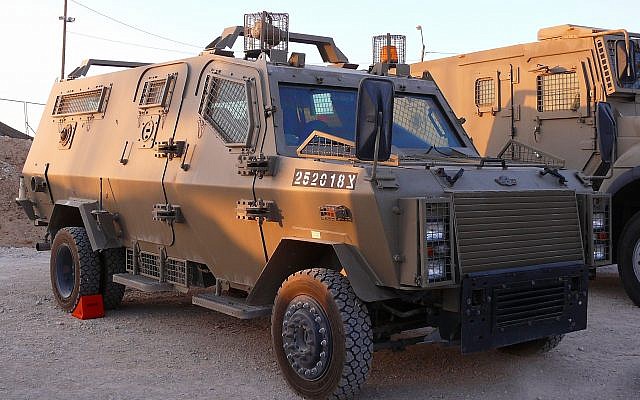
An IDF medical vehicle carrying five soldiers very nearly sustained a direct hit from Hezbollah anti-tank fire during Sunday’s attack along the northern border, as it drove along an unprotected road in a breach of army directives — with luck, rather than effective military planning, preventing the death or injury of the soldiers inside, Hebrew media reports said late Monday.
The reports appeared to contradict Israeli military sources’ claims on Sunday that an IDF vehicle that Hezbollah targeted was empty at the time. The reports appeared to tally with footage released by Hezbollah-affiliated TV earlier Monday.
Amos Harel, a senior military correspondent for the Haaretz newspaper, said the Israeli armored vehicle, of the “Ze’ev” (or Wolf) model, was traveling on a road around 5.5 kilometers (3.4 miles) from the border when it was targeted — not on the front lines, but still within the range of Kornet guided missiles.
The road was one military personnel had been instructed to avoid, Harel wrote, noting that due to the heightened alert status along the border and the expectation of a coming attack, vehicular movement had been restricted to routes that were not open to direct targeting by Hezbollah.
For some reason not yet clear, the Ze’ev, a medical support vehicle under the command of an army doctor, failed to adhere to those instructions. The Walla news site said the military was investigating the troops’ actions.
Military officials had indicated following Hezbollah’s attack that several anti-tank guided missiles hit an army base as well as an armored military vehicle, but that the vehicle was empty when it was struck.
By contrast, the footage released by Hezbollah Monday, purporting to show one of the strikes, clearly showed the missiles targeting a moving vehicle.
Harel said other targets hit by Hezbollah may have been empty, but the armored vehicle seen in the footage was very much occupied — carrying five soldiers at the time it was fired upon. “At least two missiles” were fired at what Harel described as an IDF ambulance as it drove. The first missile narrowly missed, as the Hezbollah footage showed, and the vehicle sped ahead, he wrote. “The soldiers inside, five of them, also managed to safely evade the second missile.”
The Ze’ev is not able to withstand a direct hit by a Kornet missile. The lack of injured and dead soldiers in the attack, Harel stressed, was thus chiefly a matter of sheer luck and not clever tactics.
The IDF has said no Israelis were injured in Sunday’s attack, and Prime Minister Benjamin Netanyahu said none was so much as scratched, while Hezbollah has maintained that its strike killed and injured Israeli soldiers.
Following the attack, pictures and videos released in Israel showed two apparently injured soldiers being evacuated via helicopter from the scene. However Israeli sources later said this had been a ploy meant to trick Hezbollah into thinking it had caused casualties. Haifa’s Rambam hospital said the two soldiers were released without requiring medical treatment.
Israel apparently hoped that Hezbollah, thinking it had inflicted casualties, would conclude that it had retaliated sufficiently for a pair of Israeli strikes on Hezbollah and Iranian targets late last month, and hold its fire.
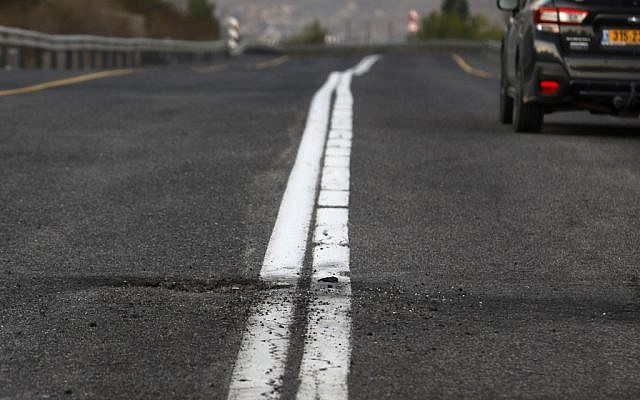
The military had initially said the Hezbollah attack hit an empty ambulance, but later said this was erroneous and that it was an armored vehicle functioning in that capacity.
A Hezbollah-affiliated TV network on Monday published footage it said depicted the terror group’s missile strike.
The footage from Al-Manar TV shows a Hezbollah fighter launching a Kornet guided missile at what appears to be a moving Israeli armored car moving along a road. An additional launch at the vehicle is seen from further away.
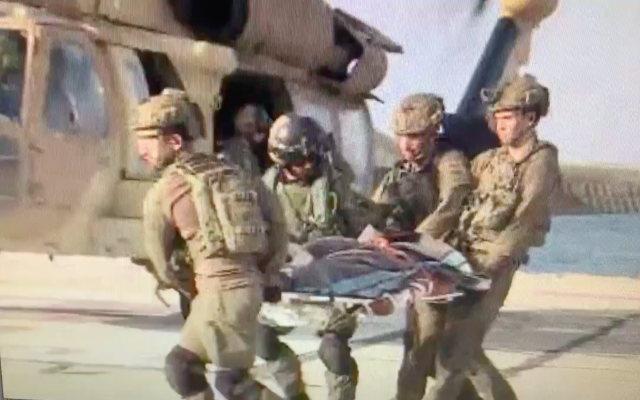
An Israel Defense Forces source told Channel 12 news Monday that Israel was prepared for a massive retaliation against Hezbollah’s precision missile system in Lebanon, and only opted against carrying out that plan because no Israeli soldiers were hurt in the cross-border attack.
“The fact that [Hezbollah leader Hassan] Nasrallah missed and didn’t kill any Israelis saved Hezbollah from the destruction of its precision missile program,” the source said. “The planes were already in the air.”
In response to Sunday’s attack, the Israeli military said its artillery cannons and attack helicopters fired approximately 100 shells and bombs at Hezbollah targets in southern Lebanon. But the attacks were apparently limited in scope, as there were no reports of any serious casualties on the Lebanese side either.
Hezbollah indicated that the missile attack was in response to an airstrike by the IDF last month that targeted an Iranian-led plot to bomb northern Israel with armed drones, killing several Iranian operatives, including two Hezbollah members.
Hezbollah chief Hassan Nasrallah on Monday evening said his Iran-backed terror group would begin targeting Israeli drones flying in Lebanese airspace, and announced there were “no more red lines” in the fight against Israel, a day after the cross-border clashes.
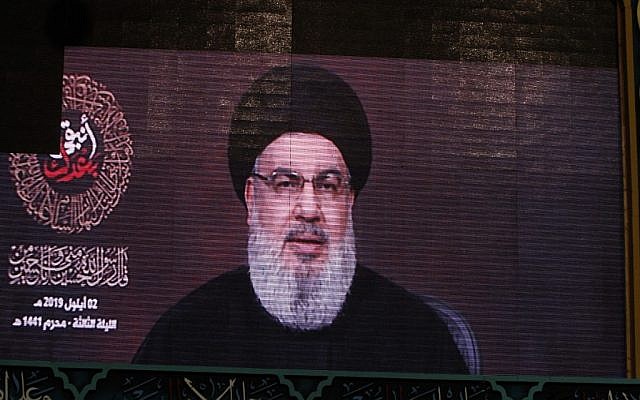
In his comments Monday, Nasrallah did not address the question of casualties, though he was adamant that his forces had “hit [the target] without a doubt.” Instead he focused on the supposed audacity of the attack and sought to cast the assault itself as a victory.
In the past, “[Israel] would not tolerate anyone putting a hand on the fence, sending something like a drone back and forth quickly, shooting in the air or throwing a bomb into an open area,” Nasrallah said. “It would respond harshly because for it that was a red line. What happened yesterday is that the resistance broke what has for the past dozens of years been the biggest Israeli red line.
“It is no longer a red line,” he said. “That has ended. There are no more red lines.”
Nasrallah vowed to hit “deep inside Israel,” and not just along the border, in case of a new Israeli attack.
Nasrallah took credit for what he termed a successful operation in Sunday’s missile attack on IDF positions, despite the failure to cause Israeli casualties.
“Despite all the preparations and fake targets the enemy scattered along the border, we waited for our target and when it came, we hit it, without any doubt,” he said of the missiles which struck the IDF vehicle as well as an army post at Avivim.
And he urged his followers not to view the Sunday attack as underwhelming, saying its importance was in the psychological effect it had on the Israelis.
“The entire border was evacuated, you couldn’t see a single soldier on the border, nor any of the tractors we saw for a time. Second, they evacuated all their forward command posts,” Nasrallah said. “They emptied entire bases, like Avivim, a complete evacuation. A reporter from one channel walked around there and showed how everything was empty, there was no one. Entire outposts were emptied, some of them deep inside [Israeli territory].”
He was referring to a report by RT Arabic Monday in which a reporter could be seen walking around the Avivim post, which was deserted. The IDF later acknowledged it had been evacuated due to the Hezbollah threats.
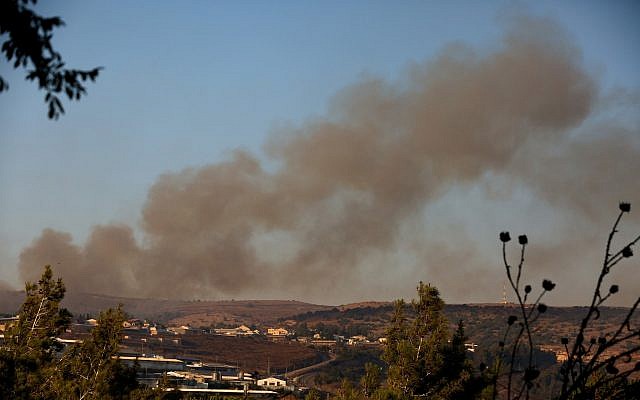
Nasrallah mocked Israel’s response to the anti-tank missile attack: “Israel, which responds to every grenade or action, did everything it could to contain the incident, and most of the fire it directed [toward Lebanon in response to the Hezbollah attack] was at defensive targets, not offensive ones.”
Also Monday, Netanyahu issued a video statement on Sunday’s exchange of fire with Hezbollah, saying Israel “acted with determination and responsibility. We kept our citizens safe and also guarded the well-being of our soldiers.”
“The man in the bunker in Beirut knows exactly why he is in a bunker,” Netanyahu said of Nasrallah. “We will continue to do everything necessary to keep Israel safe — at sea, on the ground and in the air — and we will also continue to work against the threat of the precise missiles.”
As reported by The Times of Israel
